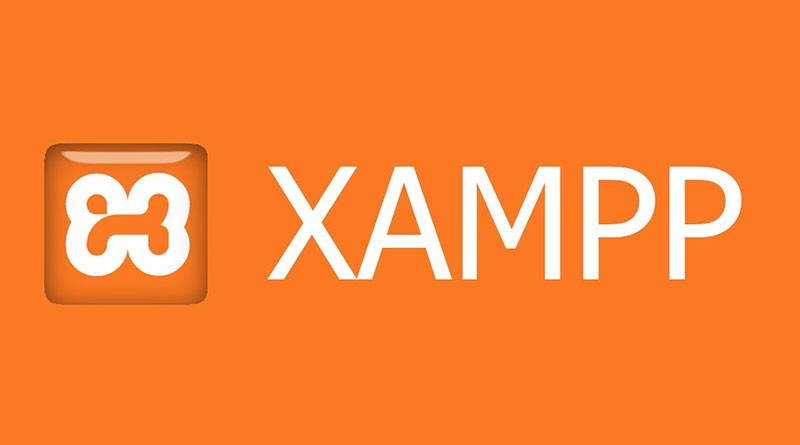Table of Contents

Introduction
WordPress Jetpack, WordPress is undoubtedly one of the most popular content management systems (CMS) on the web today. It is estimated that WordPress powers over 40% of all websites on the internet. One of the reasons for WordPress’s popularity is the vast range of plugins available to extend the functionality of the platform. One of the most popular plugins for WordPress is Jetpack. Jetpack is a multi-feature plugin that provides website optimization, security, performance, design, and analytics. In this article, we will explore the various features of Jetpack and how it can boost your WordPress website.
- Website Optimization One of the significant features of Jetpack is its website optimization tools. Jetpack offers a suite of tools that can help optimize your website for search engines, social media, and mobile devices. Jetpack’s website optimization tools include:
1.1 SEO Tools: Jetpack’s SEO tools can help optimize your website’s content for search engines. You can use Jetpack to add meta tags, descriptions, and keywords to your website pages and posts. Jetpack’s SEO tools also provide suggestions for improving your website’s search engine optimization.
1.2 Social Media Tools: Jetpack’s social media tools allow you to automatically share your website content on popular social media platforms like Facebook, Twitter, and LinkedIn. WordPress Jetpack also provides social sharing buttons that you can add to your website to make it easier for visitors to share your content on social media.
1.3 Mobile Tools: Jetpack’s mobile tools allow you to optimize your website for mobile devices. Jetpack can automatically detect if a visitor is using a mobile device and optimize your website accordingly. Jetpack also provides a mobile theme that you can use to create a mobile-friendly version of your website.
- Website Security Website security is critical, and WordPress Jetpack provides various security features to protect your website from threats like hackers, malware, and spam. Jetpack’s website security tools include:
2.1 Brute Force Attack Protection: Jetpack’s brute force attack protection feature can help protect your website from unauthorized login attempts. Jetpack can automatically block IP addresses that attempt to log in to your website too many times with incorrect credentials.
2.2 Malware Scanning: Jetpack’s malware scanning feature can detect if your website has been infected with malware. Jetpack can also automatically remove malware from your website.
2.3 Spam Filtering: Jetpack’s spam filtering feature can prevent spam comments from being posted on your website. Jetpack can also filter out spam emails that are sent to your website’s email address.
- Website Performance Website performance is another critical aspect of website optimization. Jetpack provides various features that can improve your website’s performance, including:
3.1 Content Delivery Network (CDN): Jetpack’s content delivery network can help speed up your website’s loading time by delivering your website’s content from servers around the world.
3.2 Lazy Loading: Jetpack’s lazy loading feature can help speed up your website’s loading time by only loading images when they are visible on the screen.
3.3 Related Posts: Jetpack’s related posts feature can help improve your website’s performance by suggesting related content to your visitors. This feature can keep visitors on your website longer and reduce your website’s bounce rate.
Website Design WordPress Jetpack provides various features that can help you customize your website’s design. Jetpack’s website design features include:
4.1 Custom CSS: Jetpack’s Custom CSS feature allows you to customize your website’s appearance by adding your own custom CSS code. This can be helpful if you want to change the look and feel of your website beyond what is possible with the built-in theme options. With Custom CSS, you can make changes to the font styles, colors, layouts, and more.
WordPress Jetpack History

WordPress Jetpack is a powerful plugin that provides a suite of features to help you manage and grow your WordPress website. With features ranging from security and performance to marketing and design, Jetpack has become an essential tool for website owners around the world. But where did Jetpack come from, and how did it become so popular? In this blog post, we’ll explore the history of WordPress Jetpack and how it has evolved over the years.
The Early Years of Jetpack
The story of Jetpack begins in 2005, with the launch of WordPress itself. WordPress quickly became one of the most popular content management systems in the world, and it wasn’t long before developers began creating plugins to extend its functionality. One of the earliest plugin developers was Matt Mullenweg, the co-founder of WordPress.
In 2007, Mullenweg and a team of developers created a plugin called WP.com Stats. This plugin allowed WordPress users to track their website traffic and gain valuable insights into how their visitors were interacting with their content. However, the plugin was limited in its functionality and required users to have a WordPress.com account to use it.
In 2008, Mullenweg and his team decided to take the WP.com Stats plugin to the next level. They began working on a new plugin that would not only provide website analytics but also offer a range of other features to help website owners manage and grow their sites. This plugin would become known as WordPress Jetpack.
The Launch of Jetpack
Jetpack was launched in 2011, and it quickly became one of the most popular plugins in the WordPress ecosystem. With over 1 million downloads in its first year, WordPress Jetpack provided a range of features that were previously only available to WordPress.com users. These features included:
- Website stats and analytics
- Automatic sharing to social media
- Email subscriptions
- URL shortening
- Gravatar hovercards
Jetpack also included a number of security features, such as protection against brute force attacks and spam filtering for comments. This made WordPress Jetpack an essential plugin for website owners who wanted to keep their sites secure and free from spam.
The Growth of Jetpack
As Jetpack grew in popularity, the development team continued to add new features to the plugin. In 2012, Jetpack introduced a mobile theme feature, which allowed website owners to provide a mobile-friendly version of their site to users on mobile devices. This was a crucial feature as mobile usage continued to rise, and website owners needed to ensure that their sites were accessible to users on all devices.
In 2013, Jetpack introduced a new feature called Photon, which provided image optimization and CDN (content delivery network) functionality. This feature allowed website owners to speed up their sites by reducing the size of images and delivering them from a network of servers located around the world.
Jetpack also began to focus on marketing features, introducing tools to help website owners promote their content on social media and track their search engine rankings. The plugin also added integration with Google Analytics, giving website owners even more insights into their website traffic.
The Latest Version of Jetpack
Today, Jetpack is still one of the most popular plugins in the WordPress ecosystem, with over 5 million active installations. The plugin has evolved significantly since its launch, and it now provides a range of features that can help website owners with everything from site management to marketing.
Some of the latest features of Jetpack include:
- Security scanning and malware removal
- Backup and restore functionality
- Website search functionality
- Integration with WooCommerce, the popular eCommerce platform for WordPress
Jetpack has also made significant improvements to its performance and speed, with faster loading times and optimized code.
WordPress Jetpack Versions
WordPress Jetpack is a popular plugin that provides a range of features to help website owners manage and grow their WordPress websites. Since its launch in 2011, Jetpack has gone through several updates and changes, with each version bringing new features and improvements to the plugin. In this blog post, we’ll take a closer look at the different versions of WordPress Jetpack and what each version brought to the table.
Jetpack 1.0
Jetpack 1.0 was the first version of the plugin, launched in 2011. At the time, WordPress Jetpack provided a range of features that were previously only available to WordPress.com users. These features included website stats and analytics, automatic sharing to social media, email subscriptions, URL shortening, and Gravatar hovercards. Jetpack 1.0 also included security features such as protection against brute force attacks and spam filtering for comments.
Jetpack 1.1
Jetpack 1.1 was released in 2011 and brought a number of new features to the plugin. These features included a contact form, enhanced distribution to social media, and the ability to add sharing buttons to posts and pages.
Jetpack 1.2
Jetpack 1.2 was released in 2012 and introduced a mobile theme feature. This feature allowed website owners to provide a mobile-friendly version of their site to users on mobile devices. Jetpack 1.2 also included a range of performance improvements, such as faster load times and optimized code.
Jetpack 1.3
Jetpack 1.3 was released in 2012 and introduced a number of improvements to the plugin. These improvements included a new shortcode for embedding YouTube videos, an enhanced media player, and the ability to customize the CSS on your site.
Jetpack 1.4
Jetpack 1.4 was released in 2012 and brought a range of new features to the plugin. These features included a subscription widget, a related posts feature, and the ability to add custom post types to your site.
Jetpack 1.5
Jetpack 1.5 was released in 2012 and focused on improving the security features of the plugin. This version introduced a new feature called Monitor, which provided real-time notifications of downtime and other issues on your site. Jetpack 1.5 also introduced a new security module that provided protection against brute force attacks and spam.
Jetpack 1.6
Jetpack 1.6 was released in 2013 and brought a range of new features to the plugin. These features included a new shortcode for embedding Twitter content, enhanced image galleries, and the ability to create custom post types with their own taxonomies.
Jetpack 2.0
Jetpack 2.0 was released in 2013 and brought a range of new features to the plugin. These features included a new module called Photon, which provided image optimization and CDN (content delivery network) functionality. Jetpack 2.0 also introduced a new feature called Infinite Scroll, which allowed users to load more content as they scrolled down the page.
Jetpack 2.1
Jetpack 2.1 was released in 2013 and introduced a range of improvements to the plugin. These improvements included enhanced integration with Google Analytics, the ability to customize your site’s appearance, and a new post by email feature.
Jetpack 2.2
Jetpack 2.2 was released in 2013 and brought a number of new features to the plugin. These features included a new feature called Markdown, which allowed users to write posts in a simplified text format. Jetpack 2.2 also introduced a new module called Custom CSS, which allowed users to customize the CSS on their site.
Conclusion

In conclusion, the history of Jetpack is a story of innovation and evolution. From its humble beginnings as a simple website statistics plugin, Jetpack has grown into a powerful tool that provides a wide range of features to help website owners manage and grow their sites. Over the years, WordPress Jetpack has adapted to the changing needs of website owners, adding new features to help them stay competitive in an ever-changing digital landscape.
Today, Jetpack is an essential tool for anyone who uses WordPress to power their website. Whether you’re a blogger, a small business owner, or an enterprise-level company, WordPress Jetpack has features that can help you improve your website’s security, performance, and marketing.
Looking to the future, we can expect Jetpack to continue to evolve and adapt to the changing needs of website owners. With new features and improvements being added all the time, WordPress Jetpack will undoubtedly remain a key player in the WordPress ecosystem for years to come.

